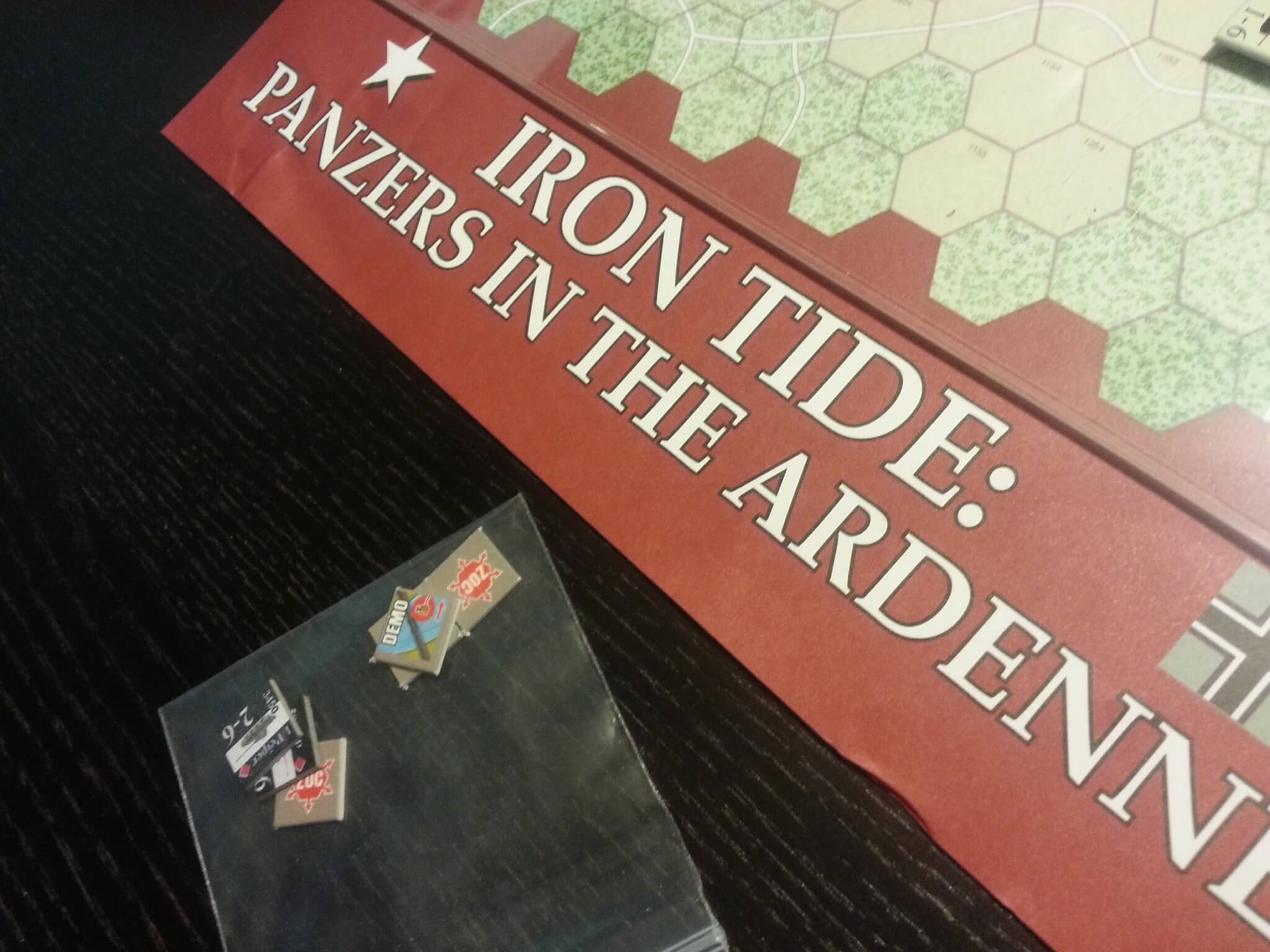Iron Tide uses the Victory in the West system for its game mechanics, to represent the battle of the Ardennes. First popularized in the classic Panzer Gruppe Guderian [correction- Operation Typhoon] (look for a play of that Side By Side with A Victory Denied shortly) and the Operation Typhoon.
There are a couple of key systems, first and most well know is the random strength chits for units, each type of unit has a variable strength range driven by an ABC rating . The second element is the combat and how column shifts are applied. Column shifts for combined arms of units, fortifications, terrain, divisional integrity (having all units in a division present in a combat), and some other elements play a core and critical role in your ability to attack effectively. An armed force required more than just ‘good odds’, the typical 3-1, 4-1 is going to see a player lose more battles than he wins. He really needs the right shifts to move him up the food chain to 7-1 or 8-1 to have less chance of an unsatisfactory result. The CRT in this system is well worth a very, very close read prior to play. Please note, that it is worth your while or a player could be sorely disappointed in a given combat!!
Supply in Iron Tide is an abstracted consideration with a trace requirement back to base sidelines of each armies board. The impact of being out of supply is negligible but isolation (a 2nd turn of OOS) will be a severe problem if you are attack. In this situation you defend at half!
Those familiar with the system will step easily into this game, movement, zoc functioning, etc all have a familiar feel, to most SPI titles. The maps of the ardenne represented have a simpler road network than most other titles on the topic and two types of woods. Strategic movement plays a role as does air and arty, those rules are well worth understanding for both players as it may mean the difference as the Allies in holding a key town or not having to sacrifice a precious unit. Whereas the Germans may use Strategic movement to rapidly change their schwerpunkt!
The axis drives are limited by tight roads, rivers, blown bridges and terrain, get used to it, also get used to the annoying frequency of Allied units appear just where they are required most.
While the US can attempt to blow bridges as desired once the Germans are in range only 9 can be rebuilt, by the Germans. This will impact German choices, at a variety of levels, Asides from supply, the Germans must keep movement and momentum and a blown bridge is a diversion that seperates the powerful but fragile Panzer & SS Divisions from Arty support and Infantry (Column shifts….its all about column shifts!;) ). The myriad rivers border the map while the center is a little more open.
The goal is to acquire VP hexes or Liege. Whilst some are easy to acquire many are not easy to hold, with a determined Allied counter attack.
Our play saw towns fall in rapidly but the USA always had a handful of units to speed bump progress. In our play the Germans forces the Allies to sacrifice Arty and Engineers to slow a powerful Axis surge. This hurt the Allies late game.

The seemingly endless stream of units will become a factor hard to deal with for the Germans at some point no doubt.
 SS units add some vibrancy to the muted tones of the map and units. The setup display below carries a lot of information critical for play, all displayed as needed. This cut down rules look up significantly.
SS units add some vibrancy to the muted tones of the map and units. The setup display below carries a lot of information critical for play, all displayed as needed. This cut down rules look up significantly.
I love the stop sings on the German units…ok, I got it I wont move them turn 1!!!!
Fortifications help the Allies, and the Westwall for the German side conveys some turn one benefits also, relieving axis forces from having to attack all adjacent units. This is key to obtaining good odds, and Good column shifts. The image above shows the Northern sector of the map.
The Southern Sector of the Map:
An over view of the setup.
The colored bars across the top of units denote Divisional affiliations, which when used together as a fighting unit provide nice modifiers for defender and attacker alike. Ok….we are ready to roll. Let’s look at each turn with an overview image, and select detail close ups of the action. Hang on tight its a wild ride! Part 2 coming shortly.





